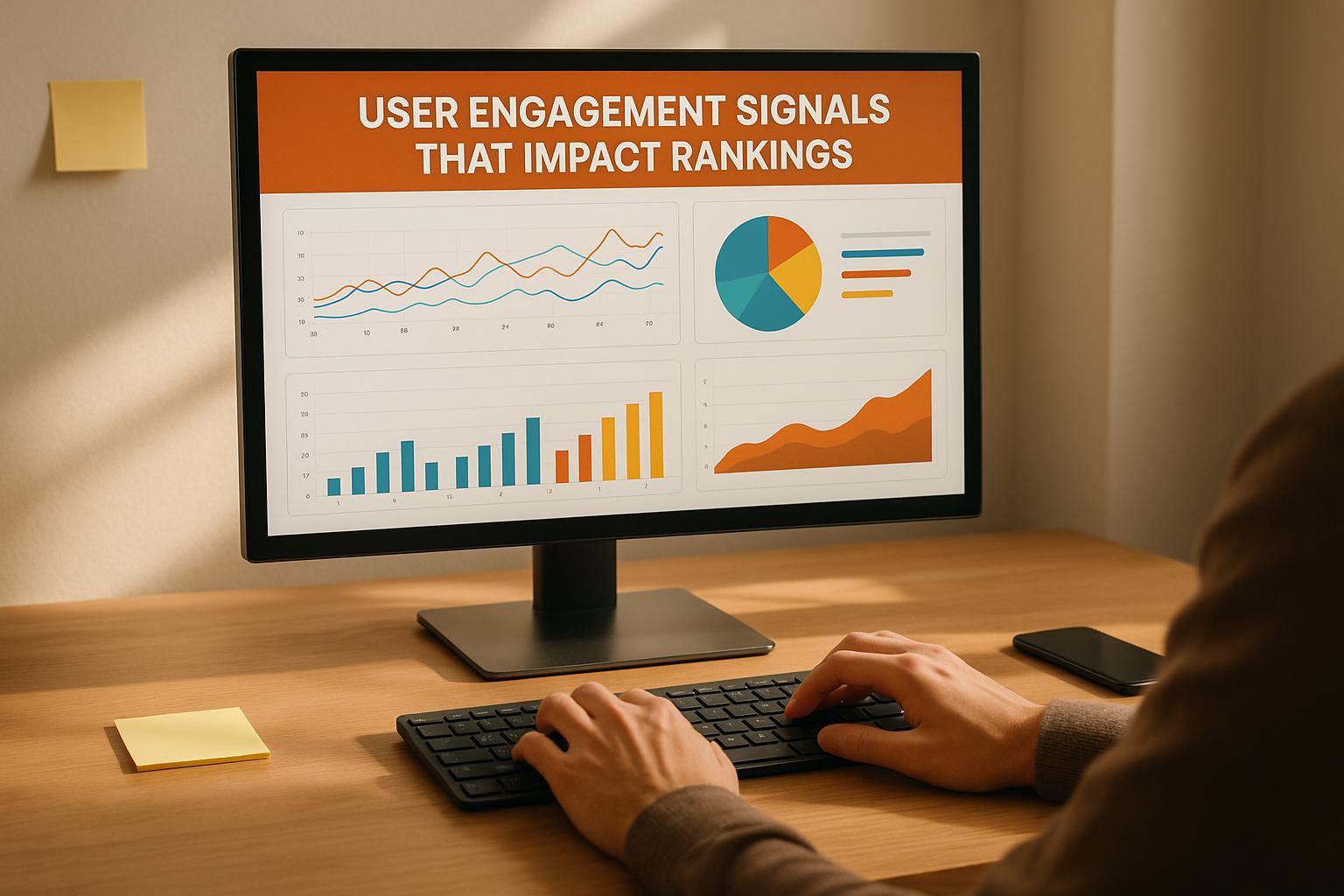

Semantic Search and Why It Matters for SEO in 2025

Semantic Search and Why It Matters for SEO in 2025
 04-06-2025 (Last modified: 19-06-2025)
04-06-2025 (Last modified: 19-06-2025)
Remember the days when stuffing a page with keywords like “best shoes UK shoes buy shoes now” actually worked? Yeah, Google’s long moved on… and now it really wants to understand what you mean, not just what you type.
Welcome to the world of semantic search.
In 2025, if your SEO strategy isn’t aligned with how semantic search works, you’re leaving rankings, traffic, and conversions on the table. This guide breaks down exactly what semantic search is, why it’s crucial for SEO, and how to optimize your site for it without turning your content into AI-generated mush.

What Is Semantic Search?
Semantic search is how search engines understand the meaning behind a query – not just the keywords used.
It uses machine learning, natural language processing (NLP), user behavior, and context to deliver results that match intent, not just exact phrases.
So instead of just looking for the word “apple,” Google tries to figure out if you mean the fruit, the tech company, or the stock price – based on your search history, location, and other signals.
Google’s semantic capabilities come from updates like:
-
Hummingbird (2013): Focused on meaning over keywords
-
RankBrain (2015): Used AI to interpret new queries
-
BERT (2019): Handled nuances in language and word relationships
-
MUM (2021): Multitask Unified Model for understanding intent across formats
-
Search Generative Experience (SGE) (2023–2024): AI-driven summaries and contextual results
Now in 2025, semantic search is baked into nearly every aspect of how Google ranks content.
Why Semantic Search Matters for SEO
Here’s why you can’t ignore it:
-
Search intent rules everything. Content that doesn’t match what users mean when they search won’t rank – no matter how well optimized it is.
-
Keyword stuffing is dead. Semantic SEO rewards natural language, topic coverage, and entity relationships.
-
Featured snippets and SGE summaries rely heavily on semantically relevant answers.
-
Voice search and AI assistants depend on semantic understanding to serve results.
Optimizing for semantic search means writing content that makes sense, uses real human language, and answers related questions users might have, even if they didn’t ask them yet.
Key Components of Semantic Search
1. Search Intent
Every search falls into one of a few categories:
-
Informational: “how to brew green tea”
-
Navigational: “Spotify login”
-
Transactional: “buy noise-cancelling headphones”
-
Commercial investigation: “best hiking shoes for flat feet”
Semantic search helps Google detect this intent and prioritize the right types of results.
2. Entities and Context
Google builds a Knowledge Graph of entities (things, not just strings). So if your content mentions “Tesla,” Google tries to connect that with:
-
Elon Musk
-
Electric vehicles
-
Nasdaq: TSLA
-
Sustainable transport
Using these semantic entities (via internal links, schema, and natural writing) helps your content become contextually rich.
3. Natural Language Processing (NLP)
Semantic search understands:
-
Synonyms
-
Word order (thanks BERT!)
-
Pronouns and modifiers
-
Relationships between concepts
So you don’t need to repeat “best shoes for wide feet UK” fifty times. Writing naturally often performs better.

How to Optimize for Semantic Search
1. Go Beyond Keywords
Instead of obsessing over exact-match phrases, think in topics and clusters. If your keyword is “best protein powder,” related terms might include:
-
Whey vs plant-based
-
Muscle gain supplements
-
Protein intake calculator
-
Post-workout recovery
Cover those in one well-organized article or internal content cluster.
2. Answer Related Questions
Use tools like:
-
Google’s People Also Ask
-
Semrush Topic Research
Answer follow-up questions your audience might ask… before they ask them. This increases time on page and gives you a shot at featured snippets.
3. Use Structured Data
Schema.org markup helps Google connect the dots.
Types worth using:
-
FAQ schema
-
HowTo schema
-
Product schema
-
Organization/Author schema
-
Breadcrumb schema
These don’t just boost your semantic SEO; they also increase your real estate in search results.
4. Write for Humans First
Sounds obvious, but too much SEO content still reads like it was spat out by a mid-range content spinner.
Use:
-
Clear subheadings
-
Natural sentence structure
-
Semantic variations (e.g. “top tools,” “best software,” “leading platforms”)
-
Entity references (people, brands, locations, etc.)
PageTest.AI can help you run A/B tests on copy variants to see what drives better engagement and dwell time – key behavioral signals that tie into semantic rankings.
5. Improve Internal Linking
Link related articles using contextual anchor text, not just “click here.” This helps search engines understand your topic clusters and boosts semantic relevance.

Common Mistakes with Semantic SEO
-
Overusing tools without adding value
-
Creating shallow topical coverage
-
Ignoring UX and readability
-
Skipping schema because it’s “technical”
-
Trying to optimize for every variation of a keyword manually
The point of semantic SEO is to build content that’s rich, helpful, and human-friendly, and that means zooming out from keywords to topics and user journeys.
Final Thoughts
Semantic search has completely changed how SEO works. It’s no longer about matching exact keywords – it’s about matching meaning.
If you want to rank in 2025 and beyond, your content needs to speak Google’s language: natural, well-structured, and filled with topical depth.
Tools like PageTest.AI can help you experiment with different layouts, FAQs, and messaging, so you can serve the best possible version of your content, both to search engines and real humans.
Semantic SEO isn’t a hack. It’s how the modern web works.
FAQs
What is semantic search?
Semantic search is how search engines understand the intent and meaning behind a search query, rather than relying solely on keyword matches.
How does semantic search affect SEO?
It shifts focus from keyword stuffing to creating content that’s contextually rich, user-focused, and topically relevant. Search engines reward content that matches user intent and meaning.
What’s the difference between semantic SEO and traditional SEO?
Traditional SEO focuses on exact-match keywords. Semantic SEO emphasizes topic coverage, natural language, entity relationships, and user intent.
How do I optimize my content for semantic search?
Cover entire topics, use internal links and schema markup, write naturally, and answer related questions users may have.
Does semantic search impact voice search?
Absolutely. Voice search relies heavily on semantic understanding to deliver conversational, accurate answers—especially in featured snippets or SGE results.
say hello to easy Content Testing
try PageTest.AI tool for free
Start making the most of your websites traffic and optimize your content and CTAs.
Related Posts

 13-12-2025
13-12-2025
 Becky Halls
Becky Halls
The Biggest Marketing Shifts Coming in 2026: What Actually Matters Now
2026 isn’t bringing “the future of marketing.” It’s bringing the correction. The dust is finally settling after years of AI noise, platform changes, and search unpredictability. And we’re now seeing what actually sticks, and the shifts that will shape how marketing teams operate for the next decade… These aren’t trends for trends’ sake. They’re structural […]

 13-12-2025
13-12-2025
 Ian Naylor
Ian Naylor
User Engagement Signals That Impact Rankings
How CTR, dwell time, bounce rate and pages-per-session influence SEO rankings — and practical steps (UX, titles, testing) to improve engagement.

 12-12-2025
12-12-2025
 Ian Naylor
Ian Naylor
AI-Driven Mobile Segmentation with Real-Time Data
AI mobile segmentation turns real-time behavioral, contextual, and transactional signals into dynamic user groups that boost personalization, retention, and conversions.
